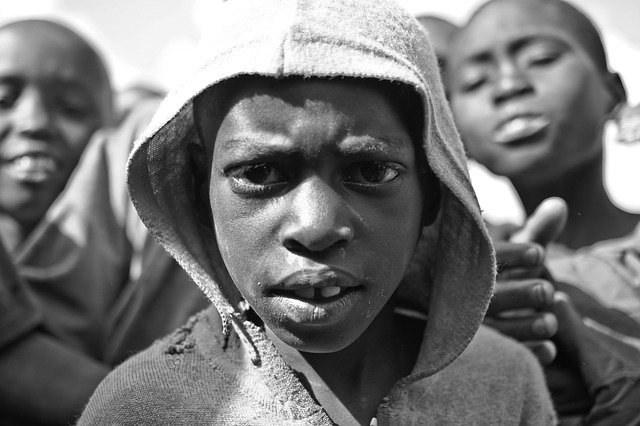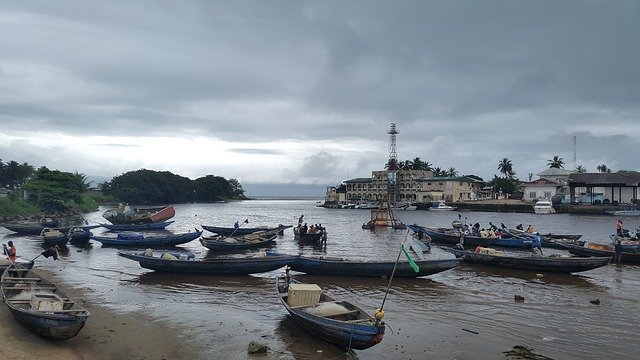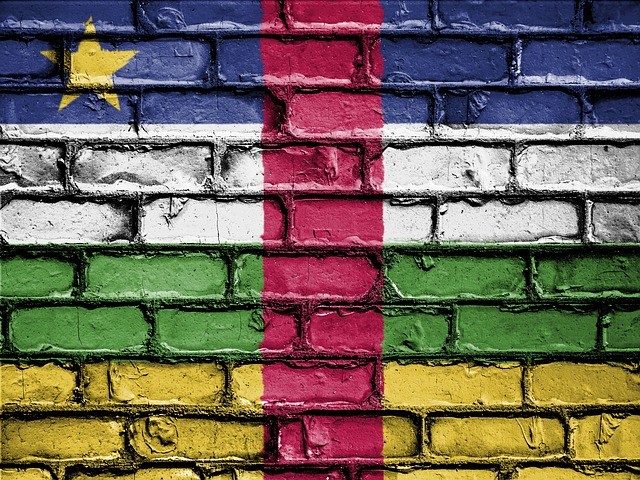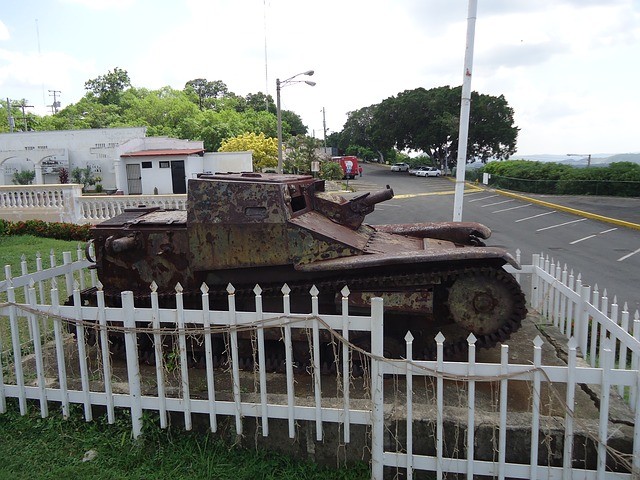Before deciding that you want to visit and see places all around the Earth, both exotic and technologically impressive ones, it’s best that you would sit down and get properly informed on which of the countries you wish to visit come with certain risks that might put you in danger.
One of the few factors that might influence your decision is the risk of civil unrest a country may pose to your holiday.
This means that you might get dragged in large crowds of locals that are quite violent. These crowds are formed as a cause of other things happening in that certain country: the political situation, the terrorist threat, and such.
That is why we have made for you a list that contains the top countries with the highest risk of extreme civil unrest so that you can be safe in your travels by choosing the right location to spend your holiday in.
Burundi

At the moment, Burundi is one of the countries in which all travel is advised against. Most, if not all of the tourists that are currently in this country are recommended to leave the country when and if they can, and by commercial means as well.
This is because land borders and international borders might get closed without warning, therefore tourists being captive in this country.
In terms of civil unrest, due to certain political developments, this country has witnessed unrest and sporadic violence since the month of April 2015. Since then, a significant number of deaths have been reported. Most of these reportedly took place in the capital, Bujumbura, but also in other major cities of the country.
This unrest is mainly caused by the political situation here, which is in turn responsible for armed clashes, a lot of violent incidents, demonstrations, protests, public gatherings, and rallies that seem to occur on a regular basis.
As a traveler here, you must always keep an eye on the media and be on your toes while walking around the city. The situation can escalate really fast, without any warning, and there’s the chance that you might get caught in protests or such without realizing it.
Nigeria

The North-Eastern states of Nigeria, as well as the delta states, are off-limits. Several governments advise all tourists that are in these areas to leave them immediately and relocate themselves to safer places.
The most important risk factor in this country is terrorism, because of the Boko Haram terrorist group that conducts attacks on a regular basis in the aforementioned areas of the country and not only.
But quite some deaths have also been reported to occur due to civil unrest, as well as injuries. Most of these happen because of the inter-communal violence and violent civil unrest that has been present in Nigeria for the past few years. The northern and central regions are most susceptible to violence and extreme unrest.
This unrest can take the form of rallies, demonstrations, suspicious public gatherings, and protests. You should avoid the areas in which these are likely to take place and keep yourself at a safe distance if you encounter any of them. Of course, it’s always a good thing to keep an ear on the news.
South Sudan

Because of prolonged armed conflict and extreme civil unrest, all travel is advised against inside this country. South Sudan is marked by a continuous armed conflict between the country’s government and various forces of the opposition.
Even though in July 2016, a ceasefire has been put into effect, the situation in this country is still very tense and violence can occur at any time.
Reportedly, the law has no effect throughout South Sudan. Because of this, many clashes between tribes have been occurring here which have caused a significant number of deaths.
Most of the military operations and conflict take place in the Upper Nile, Jonglei, and Unity states, therefore these are some of the most dangerous areas of this country. However, civil unrest and extreme violence can take place anywhere in South Sudan.
Most of this country’s borders, with Sudan, the Democratic Republic of the Congo, Uganda, the Central African Republic, have military forces or armed militia occupying them. This means an increased risk of violence and armed incursions.
Due to the current situation of South Sudan, public gatherings, protests, rallies, and demonstrations are bound to happen – as they have happened for the past few years. It is recommended that you get informed very well before planning your day in this country.
Cameroon

Bandits are the main problem of Cameroon, especially in areas located in the Far North region of the country and the Bakassi peninsula. People that find themselves in these areas are susceptible to armed banditry, kidnapping, cross-border attacks, and terrorist attacks. The same applies to the Adamaoua region.
When it comes to civil unrest, some incidents have been reported, but which are isolated and occasional. However, there are some tensions between the Northwest and Southwest English-speaking regions, which have led to strikes, protests, and, of course, a heightened risk of civil unrest.
This has been happening since the end of 2016. It is said that these protests and general manifestations of civil unrest can turn violent quite fast, so it is recommended to avoid large crowds of people.
Central African Republic

The Central African Republic has very unstable situation security, as well as an increased presence of armed rebel groups that are associated with a high level of crime.
All travel in this country is advised against as the situation could turn dangerous at any moment. Tourists that are visiting it should keep a very low profile, avoid crowded areas and be aware of their surroundings at all times.
In the capital, Bangui, have been reported a number of violent acts, looting, and killing. This is because of the political tension and civil unrest that has been on the streets of the Central African Republic since 2013. Also, due to this, rebel groups are now common here, as well as lawlessness.
Even though multiple international peacekeeping forces are present in this country, the activity of the rebel groups is still high, therefore there’s a high chance of violent attacks, protests, and demonstrations occurring.
Venezuela

Because of the political situation and the poverty present in Venezuela, there is the possibility of violent civil unrest and violent crime, and also of shortages of medicine and food.
The economy’s status is the main reason why these shortages occur. They have recently increased and even basic utilities and necessities are no longer available to the locals – and tourists – here.
Furthermore, since the month of April of 2017, there has been an increasing number of violent demonstrations in the city of Caracas, due to the political tensions that have gone down the wrong road.
If these demonstrations occur, highways and roads will most likely get blocked, therefore stopping the public transport systems as well. You would also prefer not to be caught in a crowd of protesters, as the authorities here are known to have used rubber bullets, as well as tear gas, in order to clear the areas in which these crowds have appeared.
But not only Caracas is a victim of such protests and demonstrations. Other cities, like Valencia, San Cristobal, Maracay, and Merida were the home of protests and political demonstrations. They occur regularly here, mostly because of the reasons we mentioned earlier: poor economic situations and common shortages.
Reportedly, the risk of demonstrations happening is quite high and there’s also the increased possibility that they may turn violent without any warning.
Myanmar

The political situation in Myanmar is uncertain. On top of this, there have been numerous conflicts between non-state and ethnic armed groups. Due to this, all non-essential travel is advised against in areas such as Kachin State, Rakhine State – especially its northern region -, Paletwa Township, and Shan State.
Going back to the country’s political situation, it is in a state of uncertainty because of the election that took place in November 2015 and its results. Because of this, acts of civil unrest are likely to happen.
Reportedly, rebel groups have targeted and attacked police outposts in Rakhine – August 2017 -, an act that has led to security operations on a large scale which has been responsible for the burning of villages, killing of civilians, and over 400,000 people forced to cross the border to Bangladesh. The Northern part of the Rakhine state is, therefore, susceptible to violent civil unrest.
Violent civil unrest has also been reported around and during public holidays. The acts are mostly motivated by politics and political situations and took place on holidays such as Martyrs Day, 19 July, and the Armed Forces Day, 27 March.
The presence of security forces might also increase throughout the country during the celebrations of the Uprising that happened on the 8th of August 1988 and of the protests in September 2007. The celebration of these anniversaries may develop crowds that are likely to become violent.
Nicaragua

Only essential travel should be done inside Nicaragua, because of the violent crime that’s occurring in this country, but also because of the high risk of civil unrest.
Managua is reportedly home to many of the protests and demonstrations that occur throughout the country. In the past, the demonstrations have affected the public transport routes, making access to and from the airport impossible.
Quite recently, in the months of May and April of 2018, violent protests and demonstrations have been reported throughout the country. The regions of Masaya, Managua, Esteli, and Leon were mostly affected by these protests – most of the fatalities and injuries have been reported to have happened here.
While some of these demonstrations start off as peaceful and calm, it is very likely that they would turn violent in a blink of an eye. It is recommended for all locals and tourists to keep away from any crowds that resemble protests or such and to monitor the media to see what exactly is going on throughout the country.
Chile

The central parts of Santiago, as well as other major cities, are the areas in which protests reportedly occur regularly.
Also, often marked by demonstrations are the national significance dates, such as the anniversary of the military coup on the 11th of September, Worker’s Day on the 1st of May, and the anniversary of the Young Combatant on the 29th of March.
In the case of a demonstration or protest, the authorities will most likely use water cannons or tear gas to disperse the crowds and clear the area, so it’s best that tourists and any locals that don’t want to be part of these demonstrations keep themselves at a safe distance from the main crowd.
Bomb threats and small-scale bomb attacks are said to occur in Santiago, but not too often. It is speculated that most of these threats are associated with the domestic anarchist groups of Chile. The main targets of these threats and attacks are public buildings, banks, ATMs, churches, and transport facilities.
Even though they mostly occur during the night and haven’t caused injuries in the past years, it is recommended to take them seriously and evacuate the area as soon as possible if the authorities show up and demand you to do so.
Final Thoughts
As always, it is advised to keep away from the crowds and protesters as demonstrations can escalate and become violent at any time.
Of course, there are other countries that have a high risk of civil unrest – however, we highlighted those in which recent incidents have been reported. For your safety, you should get informed before planning to travel to any of the aforementioned countries or in any other country that you may think has a poor internal situation.
It’s also best to keep up to date with a country’s situation even after you have entered so that you would know if you have to be cautious or not.
In most of the countries marked by civil unrest, the demonstrations/ manifestations can turn violent at any time and without any notice.


